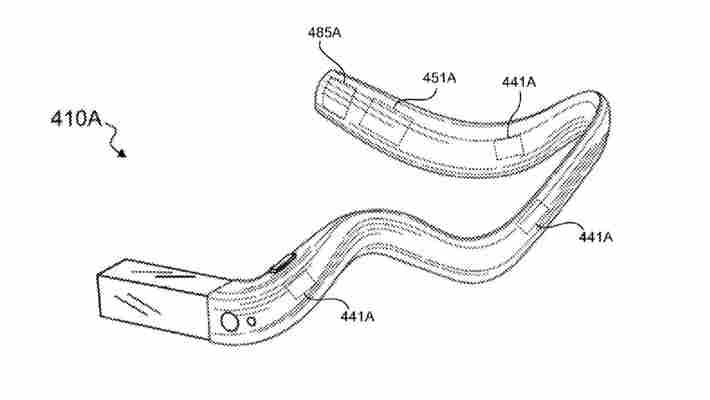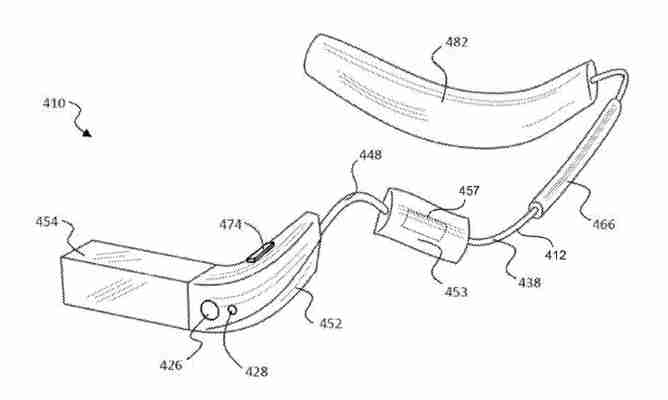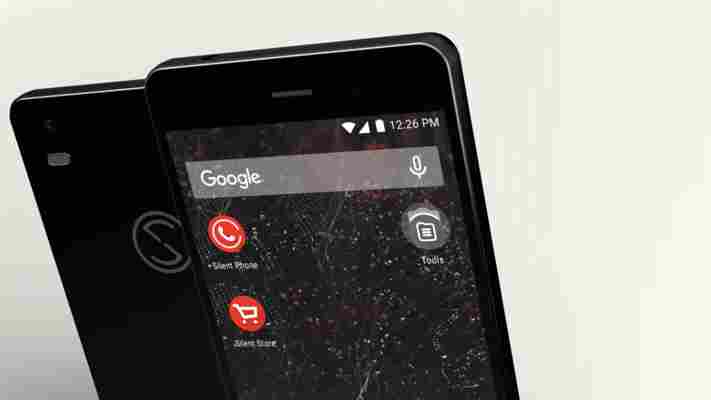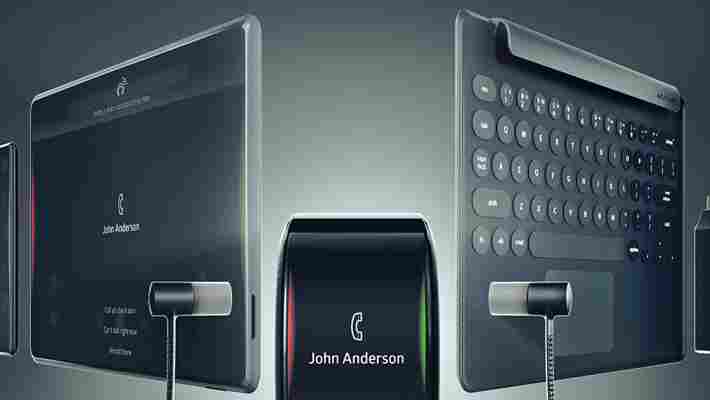Google has been granted a patent for a wearable that rests on a single ear and wraps around the head to offer a display in front of the user’s eye. It’s possible that that it could be the beginnings of the second-generation Google Glass.

The patent describes the wearable as being capable of retaining its configuration, so it stays in a shape the user is comfortable with. The band can also double as a touch-based input surface.


It also mentions how a single display could be used with a prism or or other structure configured to extend over both eyes of the user for displaying an image viewable by both eyes.”
Google shut down public sales of Glass in January and put Nest CEO Tony Fadell in charge of the program. In July it was reported that Glass would be repurposed as an enterprise device in fields like healthcare and air travel.
In September, Google hired engineers from Amazon’s Lab126 , its hardware research arm, to work on a wearable known as Project Aura. It’s believed that this is the new incarnation of the Glass project.
➤ Wearable device with input and output structures [USPTO via PatentYogi ]
Blackphone 2, the super-secure Android phone is now on sale
If you’ve been looking for a smartphone with increased security for your next device, it might finally be here. Silent Circle has opened orders for the Blackphone 2 in North America today.

For $799, you’ll get the second-generation Blackphone which features a 5.5″ 1080p display, LTE connectivity, 3GB RAM, 32GB of onboard storage, a MicroSD slot and a 13-megapixel camera on the back.
The device runs Silent OS, which is based on Android but custom built with privacy in mind. A feature called ‘spaces’ creates multiple, separate virtual phones so you can have a separate configuration for work and private use, without blurring the lines.
It also secures your phone calls over a Voice over IP (VoIP) connection, so you can’t be snooped on when making a voice call.
You can order the device for yourself right now if you live in the US — the high price is likely worth it, for keeping your conversations private.
➤ Blackphone 2 [Silent Circle]
The Neptune Hub Android smartwatch will power a whole suite of mobile devices
Last month, we wrote about the upcoming Neptune Duo , a dual-device offering that included the Hub, a smartwatch capable of running Android Lollipop independently, and a phone-sized display accessory. The company is now offering a bunch of mobile devices to complement the Hub.

The Neptune Suite adds a tablet, keyboard, wireless headset and dongle to round out its original package. The idea is that with the wearable Hub, you’ll always have your primary smart device and data on you at all times — with the option to use whichever display accessory works best depending on your needs.
The Tab is a 10-inch touchscreen that includes a front-facing camera and a 7,000 mAh battery. It works similar to the Pocket screen, which doesn’t have a processor itself, but pairs with the Hub over an efficient new wireless protocol called WiGig .
The Neptune Keys keyboard can be attached to the Tab for a laptop-like computing experience, or used wirelessly with the HDMI-based Neptune Dongle that you can plug into a monitor or TV for a larger display.
The Headset wirelessly streams audio to its earphones, and can be worn as a necklace when not in use — the earbuds snap together with magnets to form a pendant of sorts. Neptune says it can also charge up to three devices simultaneously using power from a single outlet.
Given that we’re used to having our phones stream content to our smartwatches and external displays, Neptune’s concept might sound a bit odd. However, I think the company might indeed be on to something here.
For starters, you don’t really need to replace your phone and tablet’s screen every couple of years when their processor becomes outdated and slow. With the Neptune Suite, you could just get a new Hub and enjoy better performance across your devices.
Secondly, the Hub can be charged using the Pocket screen and Tab, while the Headset works a three-point charging cable. This way, you don’t have to worry about running low on power or have to carry a battery pack when you’re out and about.
Plus, the WiGig protocol used to beam content and input from the Hub to its accessories allows for transfer speeds of up to 7Gbps, so latency should be almost imperceptible.
Lastly, Neptune is offering the Suite at launch for the same price as the Duo — $599 at pre-order or $899 when it goes on sale. It garnered a fair amount of interest back when it offered just two devices, and has since crossed its Indiegogo campaign funding goal of $100,000 by over $600,000.
Neptune makes a watch-first computing setup sound plausible — but we’ll have to wait and see if the Hub can really keep up with users’ demands for performance in daily use.
➤ Neptune
